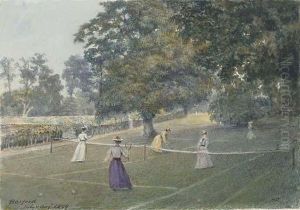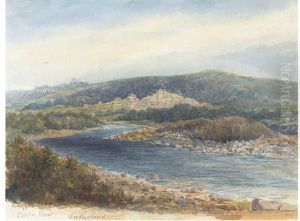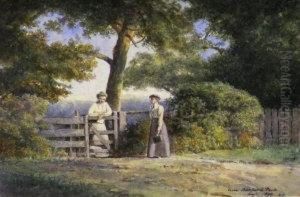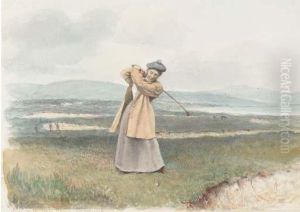Henry Clifford Paintings
Henry Clifford was an artist whose life and work spanned the mid to late 19th century, a period characterized by significant changes in art and society. Born in 1826, Clifford's career unfolded during a time of great innovation and transformation in the art world, with movements such as Romanticism giving way to Realism and Impressionism. However, Clifford's name is not widely recognized in the mainstream history of art, and his contributions are somewhat obscure, leading to potential confusion with other historical figures or artists.
Despite the lack of widespread recognition, Clifford's work and life story offer valuable insights into the artistic landscape of his time. He would have been a contemporary to some of the era's most renowned artists, navigating the challenges and opportunities presented by the rapidly evolving art scene. The 19th century saw the rise of art academies and salons, which played pivotal roles in an artist's career, offering opportunities for exhibition and patronage but also imposing strict standards and tastes.
Clifford's artistic output and style remain under-documented in available historical and academic sources, which poses challenges in providing a detailed account of his contributions to the art world. His work might have encompassed the prevalent styles and subjects of his time, such as landscapes, portraits, or historical scenes, reflecting the broader trends and influences of 19th-century art.
The latter part of the 19th century, towards the end of Clifford's life, was a period of significant change, with the emergence of movements like Impressionism challenging traditional techniques and subject matter. If Clifford's career extended into this period, it would have been marked by the tension between the established artistic conventions of his early career and the innovative approaches that characterized the era's closing decades.
Henry Clifford passed away in 1883, leaving behind a legacy that, while not prominently featured in the annals of art history, contributes to the rich tapestry of 19th-century art. His life and work exemplify the journey of many artists of his time, navigating the complexities of an ever-changing artistic landscape and striving for recognition and success amidst the shifting trends and preferences of the art world.






